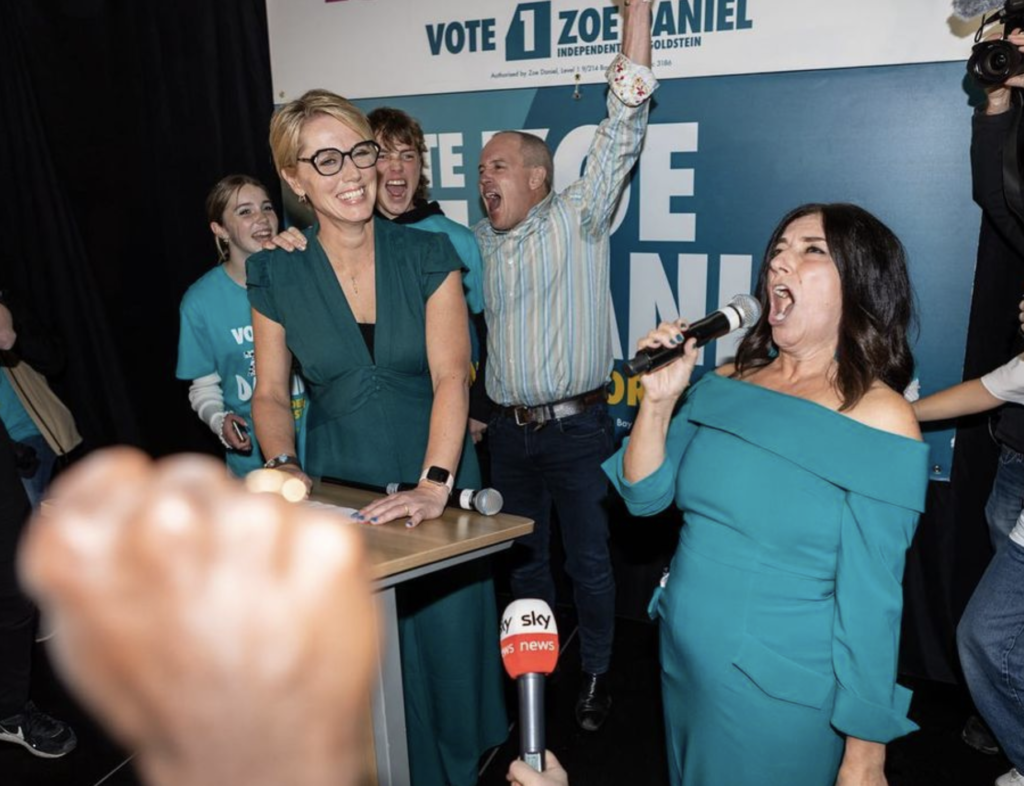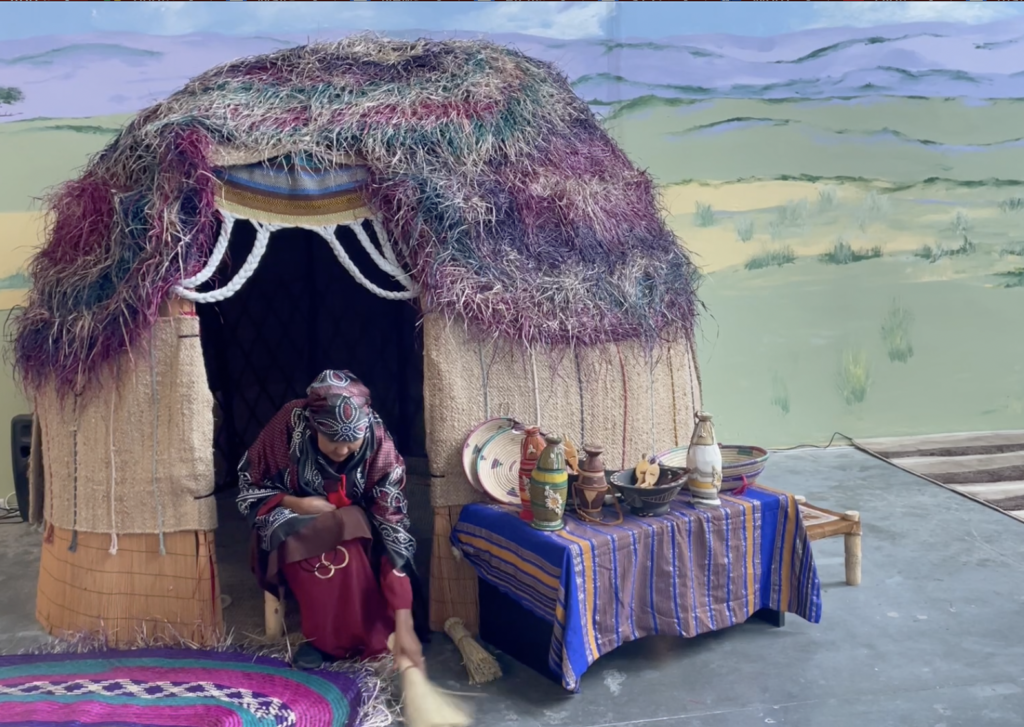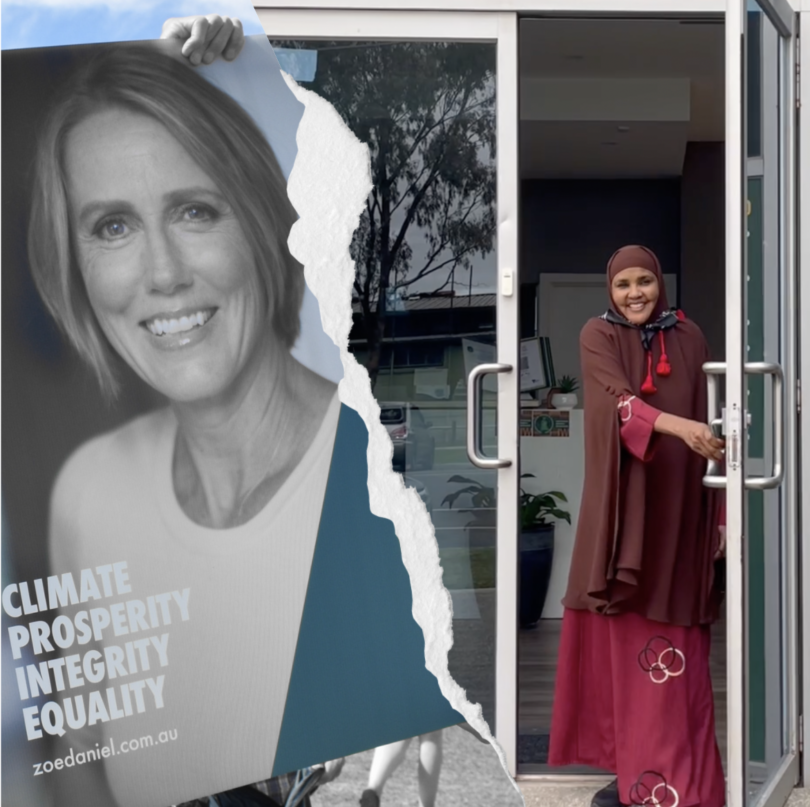While I was in high school, I was led to believe that girls play an instrumental role in leadership, but since leaving school, I couldn’t see this being translated to women as leaders in what I now knew as the “real world”. I wanted to work out why that might be, or if I just couldn’t see women being presented as “in power” as often as I saw men “in power”. This idea of women as leaders in society – in the community, in politics, in businesses, in schools – sparked many questions within me:
Who are they? How many are there really? What does a woman in a leadership position even look like? More importantly, how do they get there? How do they stay there?
When the Federal election was called in April this year, the two leaders of the major parties and thus, the two Prime Ministerial candidates were always going to be men, but there was a notable presence of women putting themselves up as electoral candidates. And even more notably still, the so-called “Teal” candidates were making safe blue seats shiver.
I spoke with Zoe Daniel two weeks before the election, she was the Independent candidate for Goldstein at the time, and now with 92.5% of votes counted for the electorate, she’s won the seat with a 34.5% swing and 52.8% of the votes.
“I think that what women bring is just something extra, so it’s not to do with taking anything away it’s to do with adding something and just bringing a different perspective to the room, and then being at the table to actually articulate the perspective of the female half of the community,” she said.
As a former journalist, Zoe Daniel has observed elections and politics at home and abroad. With a keen awareness for how these events play out, she went into her own campaign with a different set of tools than most candidates.
“Look, I think I’m aware of the circumstances in which I’ll find myself, you know, my eyes are wide open to how politics looks, how toxic it can be, and how sexist it can be, and just how challenging it is for women because I’ve been around politics for a long time as an observer.”

Daniel’s long time friend and sports journalist, Angela Pippos, became the media advisor for the campaign after the Voices of Goldstein chose Daniel to be their independent candidate. Coming from a sport reporting background provided a particular understanding of power plays and competition, but at the start of the campaign, Pippos believed the media didn’t seem to think the independent candidates were part of the race.
“The media has a responsibility to be balanced and to accurately reflect what’s going on. I feel as though there was some confusion at the start of the campaign as to ‘who are these so-called teal independents?’ A number of media outlets chose to ignore them at the start, and now they’ve woken up and realised that this is a force,” Pippos said.
Now that election results are all but finalised, it’s worth noting the Teal independents who went on to win their seats.
Zali Stegall retained Warringah, Kate Chaney won the seat of Curtin, Dr Sophie Scamps won the seat of Mackellar, Kylea Tink won the seat of North Sydney, Allegra Spender won Wentworth, Dr Monique Ryan won Kooyong, and as we know Zoe Daniel won the seat of Goldstein.
Angela Pippos’ insights of media coverage at the time are interesting knowing what we know now.
“I just sort of shake my head really at some of the reporting that we’ve seen so far… people not recognising that this is a legitimate story, that’s been quite amusing from the sidelines, to look at it from this side of the fence.”
Whether the lack of coverage came from the candidates being women is unclear and inconclusive, but Olivia Smith, Zoe Daniel’s social media coordinator, spoke of the ingrained portrayal of women in mainstream media.
“I would say women generally get a tougher run in the news cycle than men, so these prominent women coming forward, shaking things up and threatening the relatively previously stable positions of a lot of liberal MPs, will receive a tough run in the media but that is by no means reflective of the general population of Australia, but what’s in the headlines can have a big effect,” said Smith.
Zoe Daniel said the “sexist lens” that had been put over her campaign stemmed from the media’s perception of Simon Holmes á Court’s as the conductor behind each independent’s campaigns.
“The group of independents that I’m a part of, it has been called Charlie’s Angels as a reference to Simon Holmes á Court from Climate 200, somehow pulling the strings, which I think is really inappropriate and very sexist from the perspective of someone like me who very much has my own mind and my own opinions and my own capacity to make decisions, so I don’t need to be directed by a man from behind the scenes,” said Daniel.
Working in the public sphere has exposed Daniel to women who maintain their high profile political positions, and this definitely seems to motivate her as a woman going into politics.
“One thing that’s interesting is that in the US, for example, there’s some really strong female politicians in Congress and in the US Senate who’ve been around for a long time who are real survivors in politics and I think those people arguably display a degree of real mental toughness and that they face sexism everyday, but they managed to traverse the system to still achieve what they need to achieve and to do their job, so it demonstrates that it can be done.”
Working internationally has given Daniel the perspective that women can be highly successful leaders when they are elected.
“I’ve also seen in other countries where I’ve worked in Southeast Asia particularly and also in Africa, it’s some incredibly strong women step up into leadership roles and be able to successfully execute that so there’s some mentors I guess, or some successful examples of women who’ve been able to survive in politics around the world which I think is really useful,” Daniel said.
In several countries, including Rwanda, Nicaragua, Mexico and the United Arab Emirates, there are legislated gender quotas that instate a 50% even split of men and women in parliament, while in Australia we still only have voluntary party quotas for representation of women.
“I know the Labour Party has made some efforts to address that imbalance with quotas, and the Liberal Party hasn’t been so successful and is allergic to the idea of quotas, but what we need to do is reflect our society, not just with gender representation, but also it needs to work on its cultural makeup as well,” said Pippos.
Olivia Smith also broached the topic of representation with the idea that having an equal number of men to women in parliament would only be the first step.
“We will never be able to really make progress if we don’t have a government that isn’t representative of all the people it’s meant to be making decisions on behalf of, so it’s almost just like this wall which is stopping so much good from happening,” she said.
In the era of 2022, representation can sometimes be seen as ticking a figurative box, it can often be tokenistic and trivial, but representation and diversity matters.
Writer, journalist and curator, Najma Sambul, is currently undertaking a cadetship at The Age – her mother migrated from Somalia in East Africa and she has grown up in Footscray.
“It’s really important that organisations support [the] young migrant community, you know, journalists who want to break into the industry. It’s so important for people to feel that their kind of voice or their expertise and experience is valued in a newsroom,” she said.
This might seem like a highly specific example, but it speaks to the ways that representation can manifest across sectors.
“It’s a fantastic opportunity for young Somalis, young Africans in particular, to see themselves and myself in the position that I’m in, to perhaps think they could also go into journalism or writing or the arts at large or media, and I think just having representation, although there’s a really long way to go, it’s really good to see people that reflect the community that we live in in multiple industries.”
Najma Sambul’s mother, Fartun Farah, came to Australia in 1998 as a single mother with her five young children. Now, she is the Founder and Chairperson of the East African Women’s Foundation – an organisation that aims to provide guidance, support and legal services for East African women who have migrated to Melbourne. The organisation has a centre in Footscray and I went there to speak with Fartun.

“We know that there’s a lot of need for our community, especially women and their families, and the purpose of the foundation is to work and help the East African women and their families in Australia,” she said.
After working in Somali specific foundations, Fartun Farah decided to form the East African Women’s Foundation in 2007 to broaden the cultural reach of her work and be inclusive of all East African communities.
“My favourite part [about] running the organisation is to help whatever I can, those in need, especially the area of family violence, area of housing, area of, you know, the information and resource the community need, and my favourite, I wanted to see my dream and my vision come through, to see this centre is functional and people can come and celebrate their culture. The big area that I really wanted to see is to connect our next generation, our younger generation to their culture and language.”
The foundation started off when Najma was 11 and she now works within the organisation – she remembers her mother’s influence within the community even at that young age.
“I think like I remember just always going to community events and always seeing my mum kind of being the one leading a lot of events and organising them and as a kid, you know, as my mum’s daughter, I was expected to go to a lot of those events, so for me I kind of sometimes was dragging my feet but yeah, it’s just something that I’ve always grown up with and it just felt like a kind of like natural ascension into community work for me.”
Fartun sees Najma and her generation as fundamental to the future of the organisation, and wants to ensure the language and culture isn’t lost.
“In 15 more years from now, I see that this centre is the place that helps our youth and young people to establish the language and I’m seeing that our leadership youth group here are running the organisation in 15 years, that’s the aim, so they take over from us and run the organisation. But we have to show the way how they do, and yeah, so that’s what my vision is as well,” she said.
Do women need to be portrayed as “in power” in order to be seen as leaders? I suppose not, and the more we see women leaders, the more we can shift how we are supposed to look at people who are instrumental to the community, and the more we can challenge that traditional, patriarchal archetype of a “leader”.
Women lead in many ways, women are in power in many ways, it just doesn’t look the same as a man who’s a leader, and that’s a good thing.
(Featured image: LEFT: Zoe Daniel’s campaign rally on April 10, the same day the election was called. (ADA HALL) RIGHT: Fartun Farah standing in the entrance to the East African Women’s Foundation in Footscray. (MAYA VAN ES))

